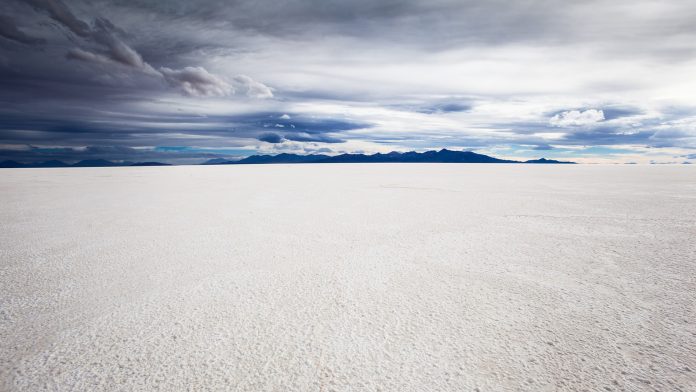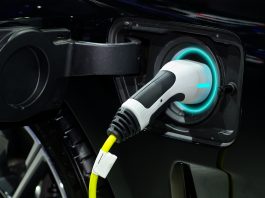Lithium Power International outlines the major technological developments, such as Direct Lithium Extraction, that are accelerating lithium mining.
The process of extracting lithium from other minerals and waste material in evaporation ponds is long proven, and is now increasingly profitable thanks to efforts to slash the use of fossil fuels. Lithium-ion (Li-ion) batteries power cars, boats, and planes and also store green electricity in huge battery farms to supply homes, factories, and shopping centres. On a personal scale, homeowners make efficient use of their rooftop solar panels to store electricity for when they need it. No matter the purpose batteries are put to, lithium is critical for the availability of clean energy.
Lithium supply
The market is being supplied from the rapid expansion of lithium mines in South America, Australia, China and beyond, but much more lithium is needed. One solution is to use efficient extraction methods to boost yields, speed up processing and reduce environmental impacts. Direct Lithium Extraction (DLE) is a technique that offers promise, and is now being used by lithium carbonate producers in Argentina. It can, however, be tricky to master. China was an early adopter of DLE, but teething problems have been recorded thanks to the particular chemical nature of the brine. Handling chloride in the salt can be dangerous because it can be corrosive and explosive. There is no one-size-fits-all solution because the geology of projects varies dramatically.
Benefits of Direct Lithium Extraction
One attraction of Direct Lithium Extraction is that it can dramatically reduce the processing time required to extract lithium from brine pumped from within a salar. Instead of lying in an evaporation pond for many months to remove water, lithium can be extracted in a matter of weeks. That means producers can greatly expand output, and profits, while cutting costs. That also benefits lithium-hungry battery makers. Not only can they contract to buy larger amounts of lithium each year, but they can ramp up battery output to fill some of the backlog in orders. Electric vehicle (EV) drivers should receive delivery of their EVs quicker.
Lithium Power International (LPI) has closely considered the potential for using DLE at its Maricunga project in Chile. There are no plans for this to happen in the first stage of development, which is now well advanced and awaiting final approvals. Initially, lithium will be extracted and processed from the company-owned ‘old code’ tenements, at depths to 400m by using traditional evaporation techniques. A future second stage will extract lithium from the adjoining company-owned ‘new code’ tenements. At this second development stage, consideration will be given to the use of Direct Lithium Extraction. That will include a detailed evaluation of DLE technologies to ensure use of the most appropriate one, including considering the conditions of the project under the company’s environment impact approvals.
Commodities pricing group Fastmarkets recently outlined the broad benefits of Direct Lithium Extraction. It said that investment is rapidly being applied to optimise sustainable and faster extraction technologies. DLE ticked the boxes, it said, because of the increased lithium recovery rates from brine and a reduction in the use of fresh water during extraction. Environmental benefits are considered to be very important, particularly in dry zones when water is scarce. DLE also can have a lower carbon footprint compared with traditional methods and reduces processing times. Methods under development include ion exchange and solvent extraction. One German project is also testing the use of renewable geothermal energy. Fastmarkets noted that there was no one-size-fits-all solution, because of the differing nature of each resource. It also noted that scaling up to commercial operation remained challenging.
Process developments
A significant number of processes have been developed by global chemical companies, including GEA, Lilac Solutions, and EnergyX. LPI has a strategic relationship with Mitsui & Co, which includes DLE and technology testing. It also retains GEA. That company describes itself as being a one-stop supplier for all major lithium process steps, including evaporative concentration, precipitation, crystallisation, purification, separation, and drying. Its expertise covers the spectrum of lithium production, from brine concentration to high-purity particles. A GEA executive board member with responsibility for business solutions, Niels Erik Olsen, said in a company publication that the company had “a very large technology portfolio covering the entire production chain for lithium.” The company says its applications apply right after mining, by refining intermediate products, and ends with a dried powder, which must be 99.5% pure to meet exacting battery material standards.
Lilac Solutions also operates in the same areas. It has recently been working on the Kachi lithium venture in Argentina for Australia’s Lake Resources. Issues have been reported between the two companies, however, related to proving the technology and fulfilling project finance obligations. Lilac is a newcomer, but has impressed investors with its patented ion exchange technology. It says that the process has a high efficiency, minimal cost, and ultra-low environmental footprint. When Lilac raised $150m last year in the US, it brought on board as shareholders BMW and T Rowe Price to support existing shareholder Bill Gates through his Breakthrough Energy Ventures. Lilac’s CEO, David Snydacker, was quoted in The Wall Street Journal recently saying that projects which would otherwise take ten years to reach production would be able to produce in about four years using Lilac’s technology.
Lilac has also gained a foothold in Bolivia – a nation with lithium resources second only to Argentina, but which has so far been opposed to commercial developments. Initially, Lilac was selected amongst 20 companies to undergo a technical diligence process. In June, it announced it had run initial tests on Bolivian brine samples to assess the abilities of its technology. It described the process as being “vigorous”, but the results were “excellent”. Lilac had been chosen to proceed as one of six prospective technology partners.
Energy Exploration Technologies (EnergyX) is another Direct Lithium Extraction hopeful, and is focusing on the Lithium Triangle area of Bolivia, Chile, and Argentina to promote a system it calls LiTAS. It is said to combine a portfolio of proprietary technologies including lithium selective, electrodialysis membranes. It claims output of lithium carbonate would take a few days, compared to 18 months for conventional evaporation ponds. Recovery rate would be 90%, compared to 30% for ponds, and it would reduce water usage to less than half. It is aiming for significantly lower costs. It has recently raised capital of $450m, and says it has completed a trial of its process in Bolivia with the state-owned Yacimientos de Litio Bolivianos (YLB).
Please note, this article will also appear in the twelfth edition of our quarterly publication.









